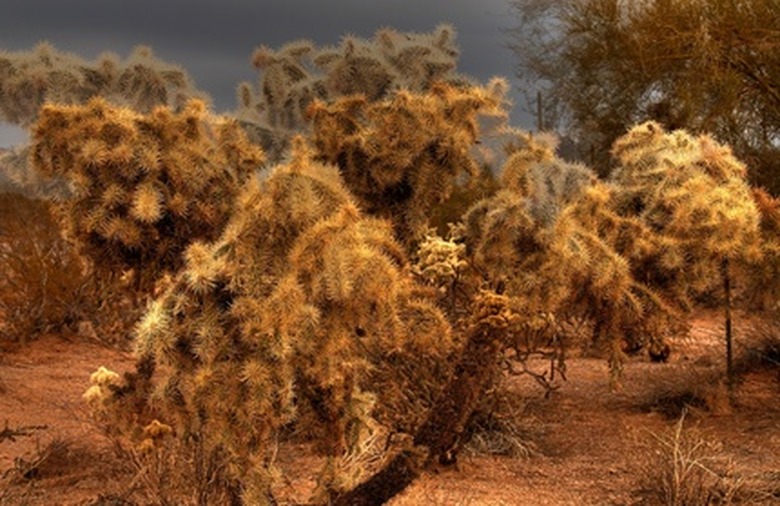How To Take Care Of A Cholla Plant
The cholla cactus is a member of the cactus, Opuntia genus along with the prickly pear cactus. They have prickly spines, joints and rudimentary leaves. In order for cacti to conserve moisture during the heat of the day, they actually grow at night when they can take in carbon dioxide and give off oxygen without loosing extra moisture. As a perennial, it needs little care as long as its basic requirements are met.
Step 1
Provide a good draining site for your cholla cactus. It can withstand dry conditions but will rot quickly if it sits in water. This is considered to be the most important element in growing the cholla plant. If you are not sure that your site has adequate drainage, you can either lift the cactus by planting it in a raised bed or add more sand to the soil.
- The cholla cactus is a member of the cactus, Opuntia genus along with the prickly pear cactus.
- If you are not sure that your site has adequate drainage, you can either lift the cactus by planting it in a raised bed or add more sand to the soil.
Step 2
Water your cholla plant. Even though you might think that as a cactus it might thrive in the dry heat of summer, it is still a plant that needs moisture to undergo photosynthesis. Cholla typically requires about an inch of moisture a month and can handle even more as long as the drainage is keeping the water from pooling. A mixture of garden soil, sand and gravel is usually a great base for the cholla cactus.
Step 3
Plant the cholla cactus in a site where it will receive at least six hours of full sunlight every day. Although it can survive for a time in part sunshine, it will not be able to generate new growth. A lack of light will eventually cause the plant to become more susceptible to disease and pests.
- Even though you might think that as a cactus it might thrive in the dry heat of summer, it is still a plant that needs moisture to undergo photosynthesis.
Step 4
Fertilize your cholla cactus with a balanced fertilizer in the middle of the growing season or about the second week of summer for your area. According to Don Campbell, of the Colorado Cactus and Succulent Society, you can fertilize by diluting with water, by mixing it in with compost applied around the base of the plant or by applying a powder or granules on the soil. Make sure you don't over-fertilize or the plant will produce too much soft growth that won't be ready for cooler winter temperatures.
